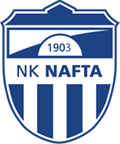| Dolgovaške Gorice Hosszúfaluhegy | |
|---|---|
| Coordinates: 46°34′27.18″N16°28′1.51″E / 46.5742167°N 16.4670861°E Coordinates: 46°34′27.18″N16°28′1.51″E / 46.5742167°N 16.4670861°E | |
| Country | |
| Traditional region | Prekmurje |
| Statistical region | Mura |
| Municipality | Lendava |
| Area | |
| • Total | 4.59 km2 (1.77 sq mi) |
| Elevation | 266.6 m (874.7 ft) |
| Population (2002) | |
| • Total | 277 |
| [1] | |
Dolgovaške Gorice (pronounced [dɔu̯ɡɔˈʋaːʃkɛ ɡɔˈɾiːtsɛ] ; Hungarian : Hosszúfaluhegy) is a settlement in the hills east of Lendava in the Prekmurje region of Slovenia. It lies on the border with Hungary. [2]

Hungarian is a Finno-Ugric language spoken in Hungary and several neighbouring countries. It is the official language of Hungary and one of the 24 official languages of the European Union. Outside Hungary it is also spoken by communities of Hungarians in the countries that today make up Slovakia, western Ukraine (Subcarpathia), central and western Romania (Transylvania), northern Serbia (Vojvodina), northern Croatia, and northern Slovenia. It is also spoken by Hungarian diaspora communities worldwide, especially in North America and Israel. Like Finnish and Estonian, Hungarian belongs to the Uralic language family. With 13 million speakers, it is its largest member in terms of speakers.

Lendava is a town and a municipality in Slovenia in the region of Prekmurje. The name of the settlement was changed from Dolnja Lendava to Lendava in 1955. It is close to the border crossing with Hungary at Dolga Vas-Rédics, and Hungarian is one of the official languages of the municipality, along with Slovene.

Prekmurje is a geographically, linguistically, culturally and ethnically defined region settled by Slovenes and a Hungarian minority, lying between the Mur River in Slovenia and the Rába Valley in the most western part of Hungary. It maintains certain specific linguistic, cultural and religious features that differentiate it from other Slovenian traditional regions. It covers an area of 938 km2 and has a population of 78,000 people.









